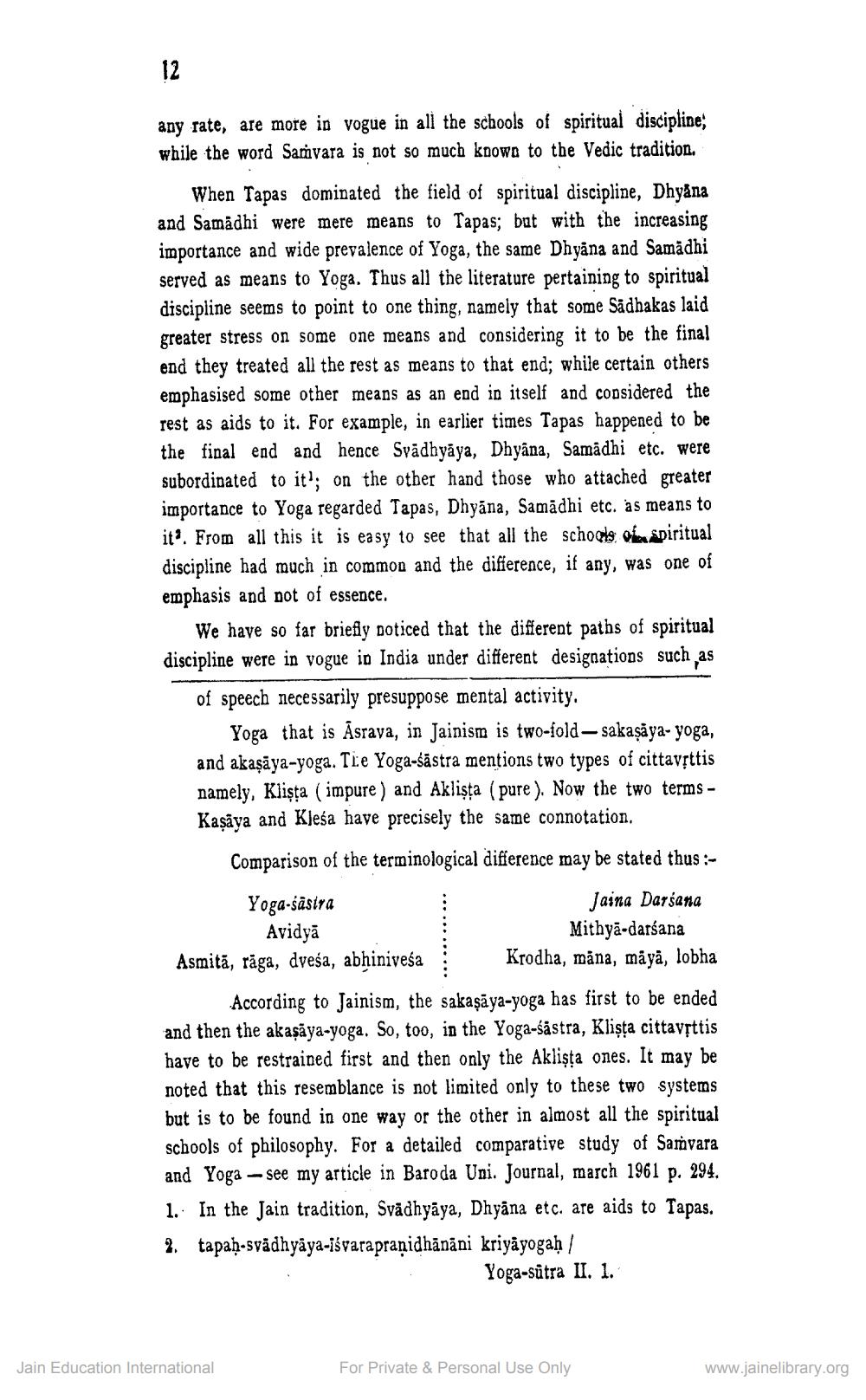________________
any rate, are more in vogue in all the schools of spiritual discipline; while the word Samvara is not so much known to the Vedic tradition.
When Tapas dominated the field of spiritual discipline, Dhyana and Samadhi were mere means to Tapas; bat with the increasing importance and wide prevalence of Yoga, the same Dhyana and Samadhi served as means to Yoga. Thus all the literature pertaining to spiritual discipline seems to point to one thing, namely that some Sådhakas laid greater stress on some one means and considering it to be the final end they treated all the rest as means to that end; while certain others emphasised some other means as an end in itself and considered the rest as aids to it. For example, in earlier times Tapas happened to be the final end and hence Svadhyāya, Dhyana, Samadhi etc. were subordinated to it'; on the other hand those who attached greater importance to Yoga regarded Tapas, Dhyāna, Samādhi etc. as means to it. From all this it is easy to see that all the schools of spiritual discipline had much in common and the difference, if any, was one of emphasis and not of essence.
We have so far briefly noticed that the different paths of spiritual discipline were in vogue in India under different designations such as of speech necessarily presuppose mental activity.
Yoga that is Asraya, in Jainism is two-fold — sakaşāya- yoga, and akaṣāya-yoga. Tie Yoga-šāstra mentions two types of cittavsttis namely, Klişta ( impure) and Aklista (pure). Now the two terms - Kaşāya and Kjeśa have precisely the same connotation.
Comparison of the terminological difference may be stated thus :
Yoga-śäsira
Avidyā Asmita, räga, dyesa, abhinivesa
Jaina Darsana
Mithya-darśana Krodha, måna, maya, lobha
According to Jainism, the sakaṣāya-yoga has first to be ended and then the akaṣāya-yoga. So, too, in the Yoga-śästra, Klișta cittavșttis have to be restrained first and then only the Aklişta ones. It may be noted that this resemblance is not limited only to these two systems but is to be found in one way or the other in almost all the spiritual schools of philosophy. For a detailed comparative study of Sarvara and Yoga – see my article in Baroda Uni. Journal, march 1961 p. 294. 1. In the Jain tradition, Svadhyāya, Dhyana etc. are aids to Tapas. % tapah-svädhyāya-išvaraprañidhānāni kriyayogaḥ /
Yoga-sútra II. 1.
Jain Education International
For Private & Personal Use Only
www.jainelibrary.org




